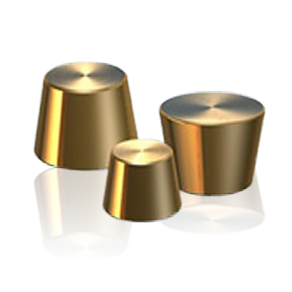Search Results for ‘’
Evaporation Material
Request a Quote

Evaporation is a common method of thin film deposition. The source material is evaporated in a vacuum. The vacuum allows vapor particles to travel directly to the target object (substrate), where they condense back to a solid state. Evaporation is used in microfabrication, and to make macro-scale products such as metallized plastic film.
Evaporation involves two basic processes: a hot source material evaporates and condenses on the substrate. It resembles the familiar process by which liquid water appears on the lid of a boiling pot. However, the gaseous environment and heat source (see “Equipment” below) are different.
Evaporation takes place in a vacuum, i.e. vapors other than the source material are almost entirely removed before the process begins. In high vacuum (with a long mean free path), evaporated particles can travel directly to the deposition target without colliding with the background gas. (By contrast, in the boiling pot example, the water vapor pushes the air out of the pot before it can reach the lid.) At a typical pressure of 10-4 Pa, an 0.4-nm particle has a mean free path of 60 m. Hot objects in the evaporation chamber, such as heating filaments, produce unwanted vapors that limit the quality of the vacuum.
Using a starter source provides a more stable process resulting in uniform evaporation since the inconsistent topography of slugs is eliminated. This provides a more uniform surface for the beam to sweep. This translates into a more consistent use of power requiring less adjustment to reach optimal coating rates.
Evaporation slugs: Available in standard sizes (0.125 x 0.125 in. and 0.25 x 0.25 in.) or cut to your specifications.
Shots: offered in various sizes from 0.040 in. to 0.118 in.
Starter sources: available in many different sizes with volumes, ranging from 5 cc to 155 cc.
Evaporation starter sources fit into the hearts of electron beam systems. They can be used for the manufacture of products in a wide variety of industries including wireless devices, LEDs, medical devices, optical coatings, functional coatings and more.




